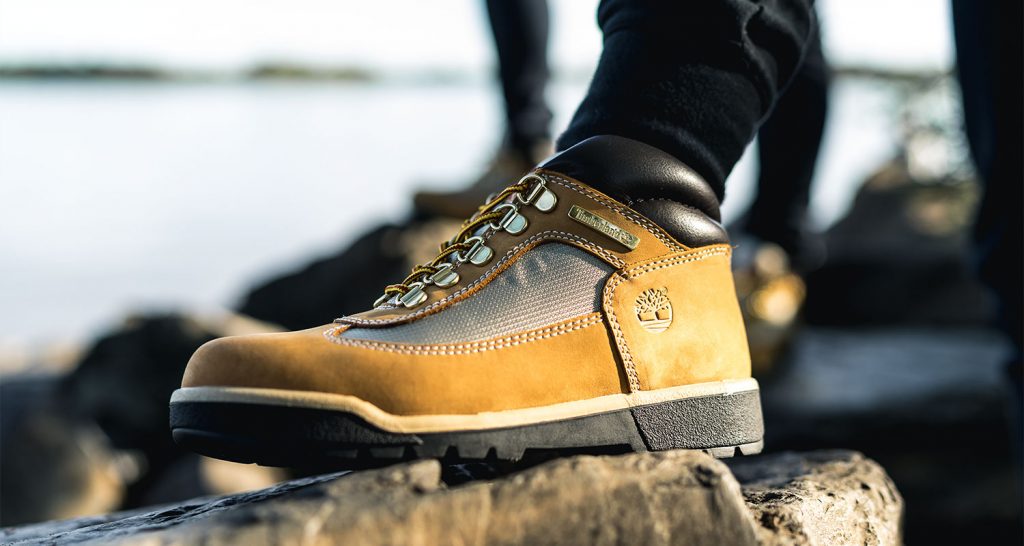Not all boots are made for walking. How do you choose a pair that won’t walk all over you? With so many styles on the market, you should not have to sacrifice style for utility. Here are some tips on what to look for in a pair of choosing the right size walking boots.
Know the difference between work boots and walking boots.
You can usually tell what the product is targeted for by reading the product description. Most retailers have in-depth details on the materials and function of boots. For example, read a description of classic Timberlands and compare with a description of Merrell hiking boots, and you’ll see some pretty obvious differences.
Consider the terrain, the season, and the weather conditions that you will be encountering.
Walking shoes are flexible and offer minimal ankle support, so they are sufficient for strolling on flat, even surfaces in mild weather conditions. If you are going to be walking over hills, mountains, or uneven surfaces, opt for walking boots with enhanced ankle support and stiffer soles. Walking boots will protect you from twisting an ankle when you’re moving up and down hills and mountains.
Look at the tongues.
The tongues of your walking shoes or walking boots should be thick enough to keep your laces from cutting into the tops of your feet. Padding on the tongue and around the ankles will keep you comfortable and cushion your feet for the impact of tougher terrains.
Pay attention to materials.
Suede, leather, and mesh fabric are all popular materials for walking boots. Mesh fabric walking boots weigh less, are more breathable and are more economical than leather or suede ones. Leather also takes longer to break in than fabric, but it will be more durable and water resistant than suede or mesh in the long run. This is only true, though, if you properly care for your leather. Wash your boots after walks and occasionally condition them.
Shop later in the day.
Your feet are larger in the afternoon than in the morning because they swell slightly as the day progresses. So the best time to shop for walking boots is in the afternoon or evening. Your feet will be closer to the size that they will be when you are hiking.
Focus on fit.
How do you know if you have the right fit? Push your toes to the front of your boot and see if you can slide your index finger down the inside of the heel of your boot. If you can slide your finger in, then you have the right fit. You should have enough wiggle room for your toes, but not so much space that your foot is swimming around inside your boot.
Obviously, you will be wearing socks on your actual walk, but trying your boots on without socks will let you know if there are any points with uncomfortable rubbing or friction. If you discover one of these problem zones, kick the boots to the curb and try on a different pair.
Also. if you know what socks you are going to be sporting on your walk, take them with you when you go shopping to wear under the walking boots that you try on. Or else buy your walking boots and socks at the same time to coordinate thickness and keep your pressure points comfortable.
Take them on a test drive.
Take your boots on a test walk up and down stairs to mimic moving uphill and downhill. Make sure that your toes don’t crash into the front walls of your boots when you trek downstairs because that’s how they will perform traveling downhill.
Tread pattern matters.
Check out the tread patterns on the soles of your walking boots. These will differ by style and brand, but they all serve a function. Chunkier treads will perform better in mud and shallower ones will help you to negotiate rockier surfaces.
Break ‘em in.
Break your walking boots in before they break you. You can do this by wearing them around the house for a few days before hitting the trail. Give them a spin while vacuuming to see how they handle your twists and turns.
Experiment with different ways of lacing them. Breaking in your boots is not as crucial of a step with mesh fabric walking boots. Those are more likely to be comfortable fresh out of the box. However, give yourself enough time to break in leather walking boots, which require more time to adjust to.
You can soften up tougher leather boots and make them more flexible by getting them just a little bit damp. A short walk through dewy grass ought to do it. This will ensure that they are more comfortable when you finally hit the path.
Believe it or not, not all walking boots are waterproof. If this is an important feature for you, then make sure to check the tag or product description of the style that you are interested in.

